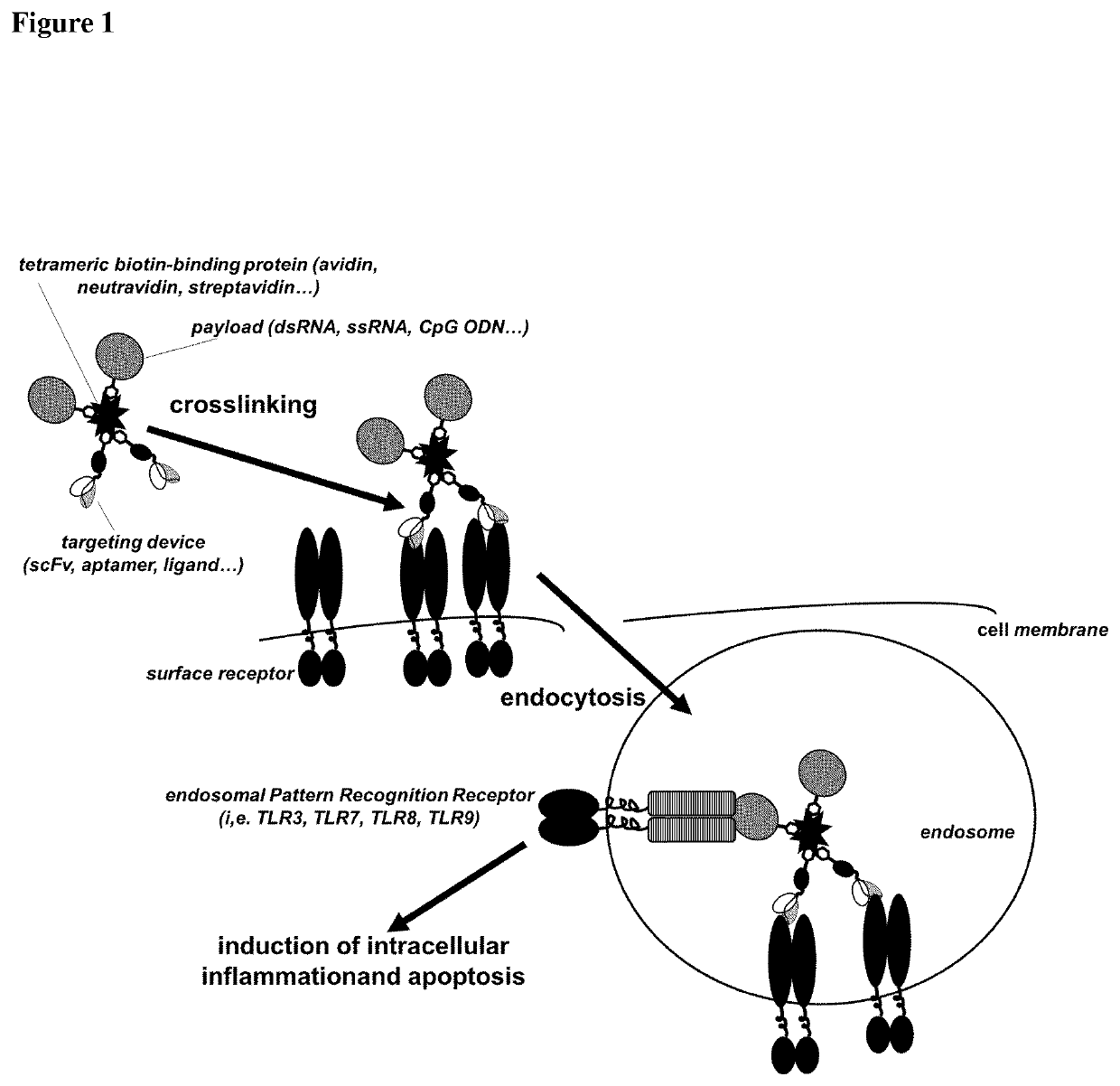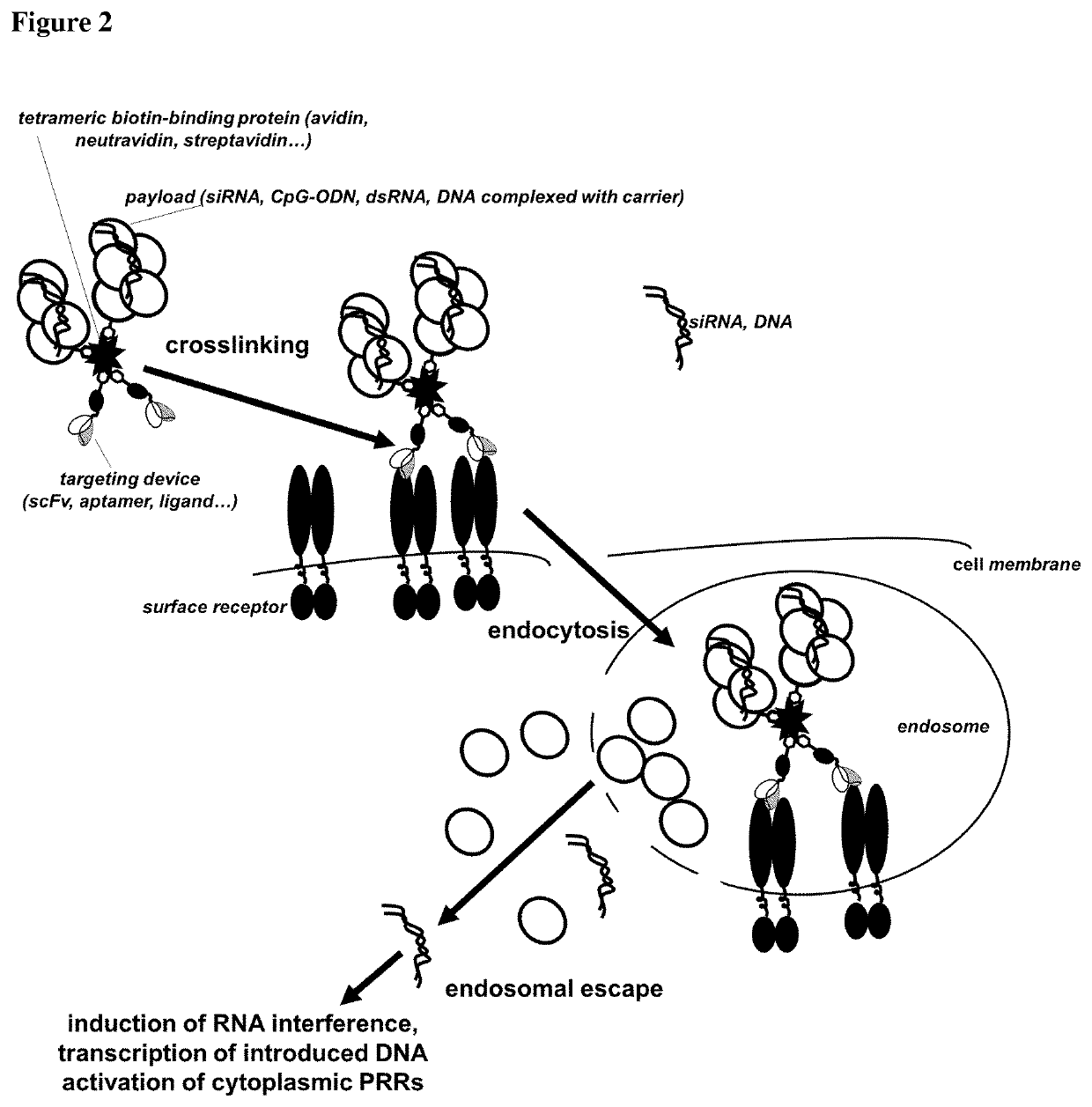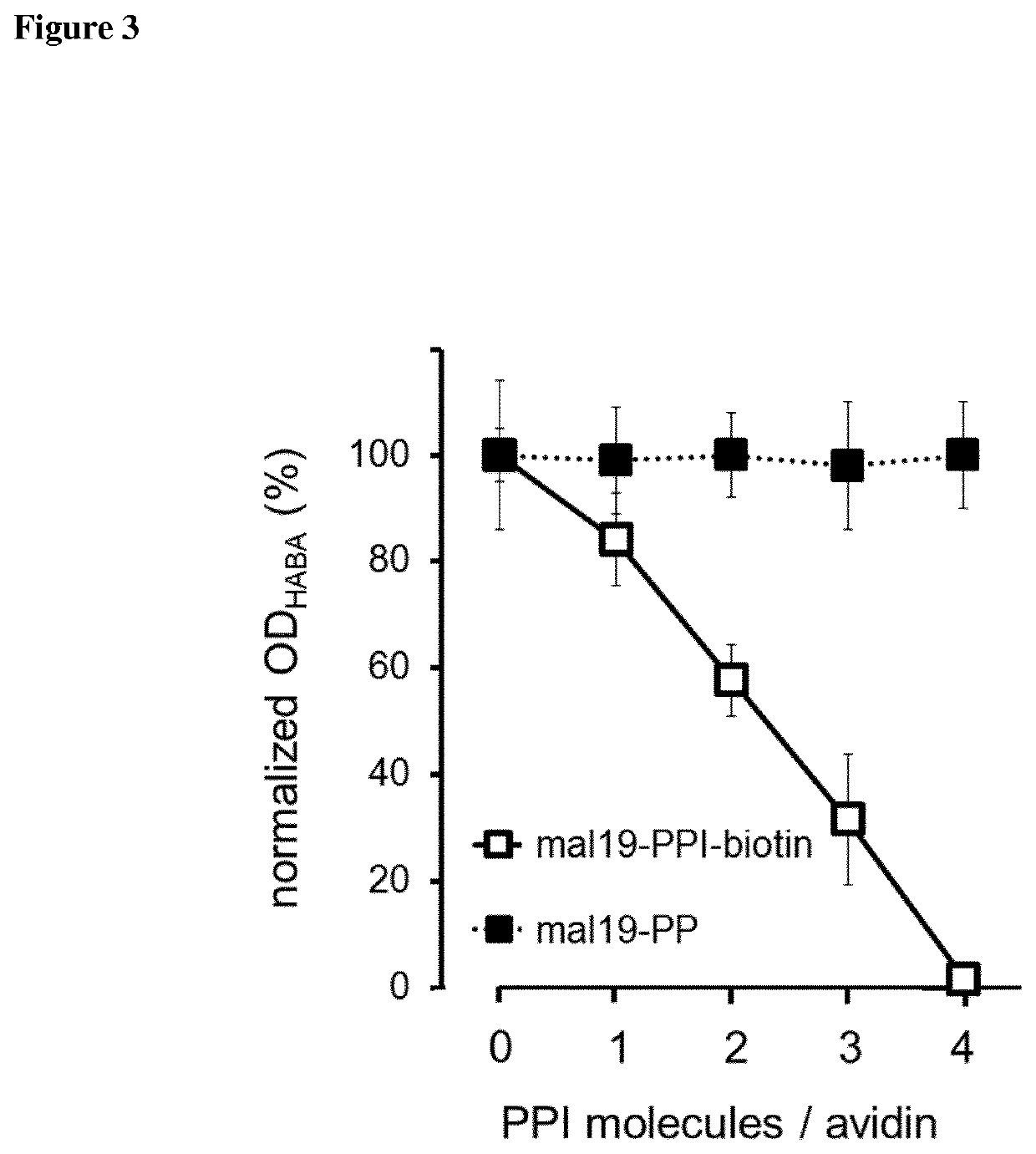A delivery system for targeted delivery of a therapeutically active payload
a payload and payload technology, applied in the field of molecular biology and therapeutics, can solve the problems of non-specific and even cytotoxic effects of sirna carrier systems on normal tissues, risk of cumulative toxicity increasing, and damage to healthy cells (off-target effects)
- Summary
- Abstract
- Description
- Claims
- Application Information
AI Technical Summary
Benefits of technology
Problems solved by technology
Method used
Image
Examples
example 1
[0301]Synthesis of Maltose-Modified PPIs and Mono-Biotinylated mal19-PPI Molecules
[0302]Sodium tetraborate decahydrate, benzotriazole-1-yl-oxy-tris-(dimethylamino)-phosphonium hexafluorophosphate (BOP), dimethylsulfoxide (DMSO), tris(hydroxymethyl)aminomethane (TRIS), and sodium chloride (NaCl) were purchased from Sigma Aldrich. Hydrochloric acid (Tritisol®) was purchased from Merck KGaA. Alpha-Biotin-omega-(propionic acid)-dodecae(ethylene glycol) (PEG12B) was obtained from Iris Biotech GmbH. Triethylamine (NEt3), D-(+)-maltose monohydrate, borane-pyridine complex (8 M in THF) (BH3⋅Pyr) were purchased from Fluka. 4th generation poly(propylene imine) (PPI-G4, 7168 g / mol) dendrimer was supplied by SyMO-Chem (Eindhoven, Netherlands) as DAB-Am64.
[0303]100mg PPI-G4, 13 mg biotin-PEG12-COOH (PEG12B, 844.0 g / mol), 31mg BOP, 442.28 g / mol) and 19 μl triethylamine (Et3N, 0.73 g / mL, 101.19 g / mol) were taken up in DMSO (10 mL). The solution was stirred at room temperature for 2 days. The crude...
example 2
Toxicity of Maltose-Modified PPIs
[0305]Toxicity of cationic PPI dendrimers is one major concern, especially when repetitively applying them as siRNA carrier for cancer therapy. Therefore cell viabilities of 293T cells incubated with increasing concentrations of mal7-PPI, mal19-PPI, 3mal-33PPI or mal90-PPI were investigated. 2×104 293T cells were plated in 96 well plates and grown in supplemented DMEM until 70% confluency, before adding different concentrations of mal7-PPI, mal19-PPI, mal33-PPI, and mal90-PPI. After 24 h, AlamarBlue solution (Thermo Fisher Scientific Inc., Waltham, USA) was added (20 μl per 200 μl medium) to all wells of an assay, and plates were incubated for additional 5 h. As positive control cells were lysed with 5% Triton X-100 (Sigma-Aldrich). Untreated cells were included as negative control. Subsequently, fluorescence intensity of the reduced AlamarBlue was measured using a fluorescence imaging system (Synergy 2™, BioTek, Winooski, USA) and 560EX nm / 590EM nm ...
example 3
Analysis of Dendriplex Formation Using Fluorescence Polarization and Agarose Gel Shift Assay
[0306]The mal-PPI / siRNA dendriplexes were prepared at different molar ratios (1:1 to 40:1) in complexation buffer (10 mM Hepes (PAA, Dartmouth, USA), 150 mM NaCl (pH 7.4; Merck KGaA, Darmstadt, Germany) by adding appropriate amounts of mal-PPIs to a solution containing 1 μg siRNA. After 30 min of incubation, the established dendriplexes were loaded onto a 3% agarose gel with 6× loading buffer (Thermo Fisher Scientific Inc., Waltham, USA). The mixture was separated in 0.5× TAE (TRIS (Carl Roth GmbH & Co. KG, Karlsruhe, Germany) / acetic acid / EDTA (Merck KGaA, Darmstadt, Germany)) buffer at 200 V for 30 min. The siRNA bands were visualized using an ultra violet (UV) imaging system (AlphaImager®, Alphainnotech, San Leandro, USA).
[0307]FIG. 5a shows complexation of siRNA specific for firefly-luciferase (siLuc3; SEQ-ID 28) (Eurofins MWG Biotech) with PPI molecules modified with different percentages...
PUM
 Login to View More
Login to View More Abstract
Description
Claims
Application Information
 Login to View More
Login to View More - R&D
- Intellectual Property
- Life Sciences
- Materials
- Tech Scout
- Unparalleled Data Quality
- Higher Quality Content
- 60% Fewer Hallucinations
Browse by: Latest US Patents, China's latest patents, Technical Efficacy Thesaurus, Application Domain, Technology Topic, Popular Technical Reports.
© 2025 PatSnap. All rights reserved.Legal|Privacy policy|Modern Slavery Act Transparency Statement|Sitemap|About US| Contact US: help@patsnap.com



